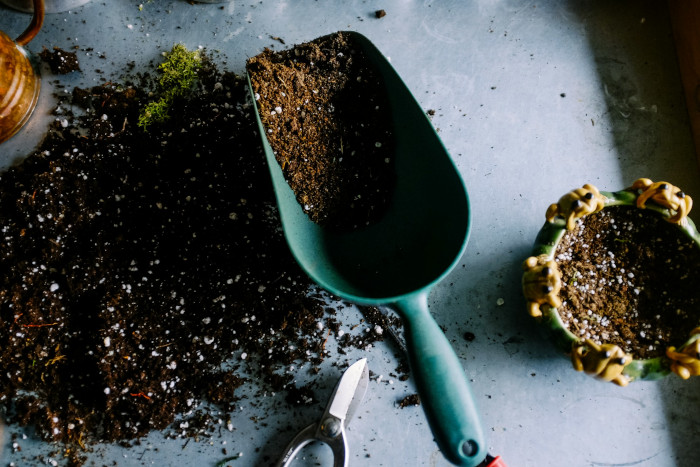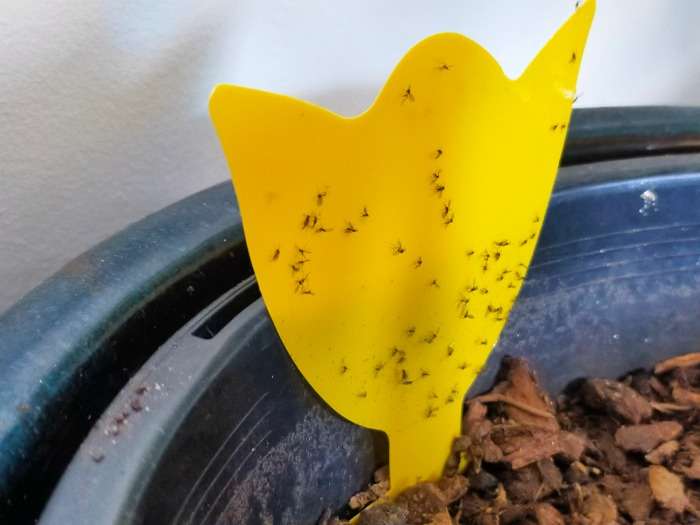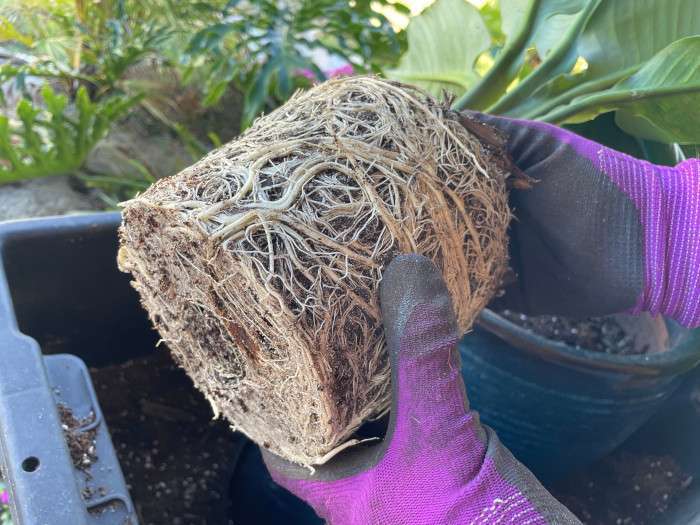The best potting soil for indoor plants strikes a perfect balance between moisture retention, drainage and aeration. In this guide, I’ll explain what to look for when buying potting mix to ensure your plants thrive. I’ll also show you how to create your own custom mix that’s perfect for your specific plants.
Getting the right mix is crucial. If the balance is off, your plant will struggle—too much moisture and you get root rot or fungus gnats, while poor aeration stunts growth. Over the years, I’ve tested different soils and blends, learning what works and what doesn’t. Today, I want to share what I’ve found to be the best approach.
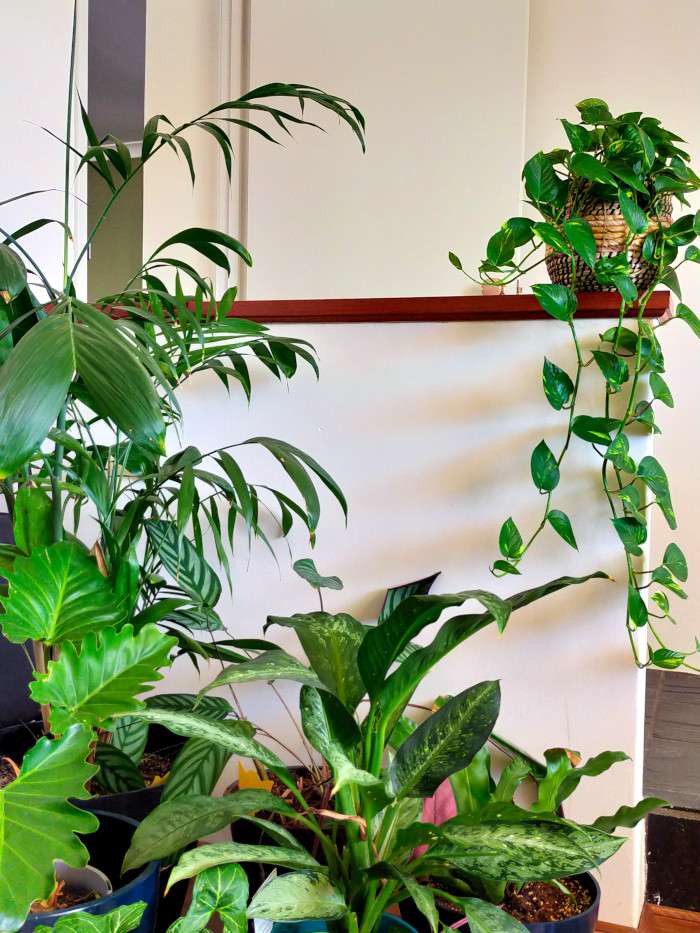
What’s the Difference Between Potting Soil and Potting Mix
You might be wondering—is potting mix the same as potting soil? Technically, no. Potting mix is a soilless blend with ingredients like coconut coir and perlite, while potting soil contains organic matter like compost or actual soil. These terms get mixed up a lot, but what really matters is the ingredients and their ratios.
Note: I use them interchangeably since, in practice, it doesn’t matter much.
Choosing the Best Potting Mix for Indoor Plants
The first step is understanding the conditions your plant has in its natural environment. Some plants like their roots to dry out , others like constantly moist or even wet conditions.
This is key—get this wrong, and nothing else you do will work.
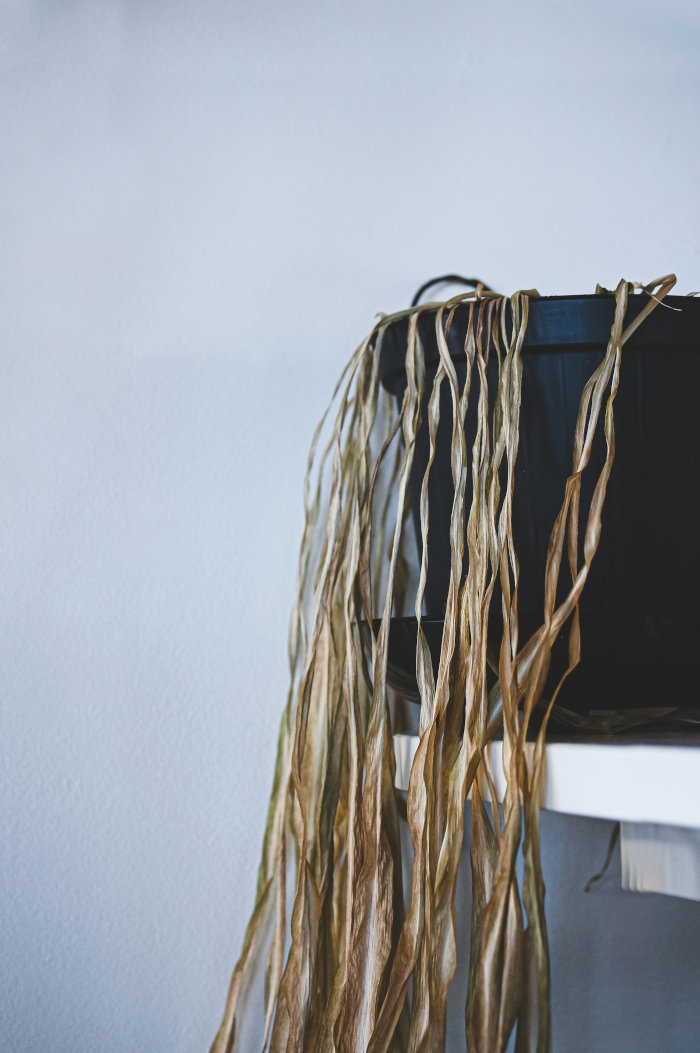
Aeration and Drainage: Why It Matters
Most plants need the right balance—moist soil that dries slightly between waterings but never stays too wet. If the mix holds too much water, roots suffocate, leading to root rot and an early death.
If it drains too quickly, the plant dries out and will give you those crispy brown leaves. Some plants actually like constantly damp conditions, while others need fast-draining soil.
Tip: A lot of the issues I’ve had with plants were due to drainage problems. It’s a silent killer.
What to Mix with Potting Soil for Better Drainage
A well-structured mix prevents these issues by using larger particles that keep the soil light and breathable. To get a better draining potting mix, try using:
- Perlite – Boosts aeration and prevents compaction.
- Sand – Improves drainage but can be heavy in large amounts.
- Bark – Adds structure while allowing airflow and moisture retention.
- Wood chips – Keep the mix loose and help prevent waterlogging.
- Lava rock – Provides excellent drainage and aeration, helping to maintain a loose and well-draining potting mix.
- Charcoal – Helps with drainage due to its chunkiness and absorbs excess moisture.
- Coco Mulch – More chunky texture while helping with moisture retention.
Tip: I’ve been having a lot of success with a DIY Chunky Mix—perfect for aroids and many other indoor plants due to its great drainage and aeration.
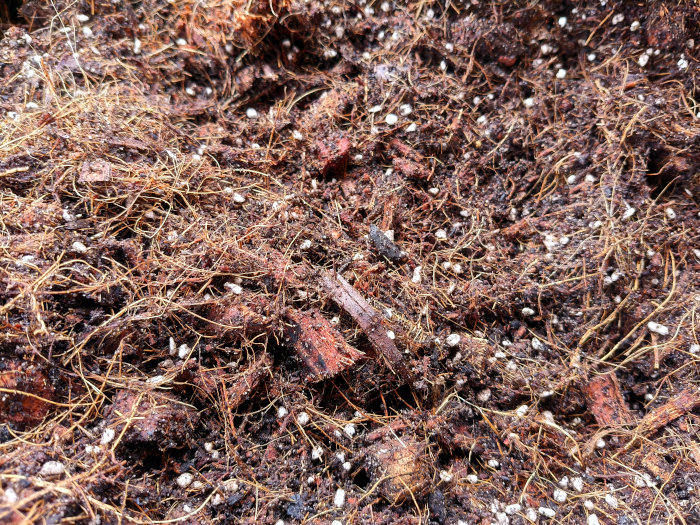
Moisture Retention: A Must for Healthy Plants
Plants constantly use water to absorb nutrients and hydrate their leaves. A soil mix that retains moisture ensures your plants get water when they need it. Too little water leads to death, while overwatering can cause yellow or brown leaves—and in the worst case, plant death.
Note: Yellow or brown leaves? Could be overwatering or underwatering—fun, right?
What to Add to Potting Soil to Retain Moisture
Think about how often you want to water your plants. A heavier mix with more soil will hold onto water for longer, while a lighter mix will drain quicker, meaning you’ll need to water more often. This is an important thing to think about when making your own potting mix.
It’s usually better to go for a lighter mix. Overwatering is a common issue, and it can quickly lead to yellow or brown leaves, and even death (I’ve been there many times before).
If you use a mix with high moisture retention, just be sure to adjust your watering routine so you aren’t overwatering.
Ingredients that help with moisture retention include:
- Clay – Holds water but be careful not to use too much, as it can make your mix too heavy.
- Sphagnum Moss – Keeps things moist while staying light.
- Coconut Coir – Retains water but also drains well, one of my go-to’s.
- Vermiculite – Holds water without making the mix too heavy.
- Peat Moss – Great for moisture, though it can get compacted, so mix it with other ingredients.
- Compost – Enriches the mix with nutrients and improves moisture retention.
- Store Potting Soil – A balanced base that offers moisture retention and drainage.
Tip: When trying a new potting mix, keep an eye on your plant’s soil for a week or two to see how long it stays moist after each watering.
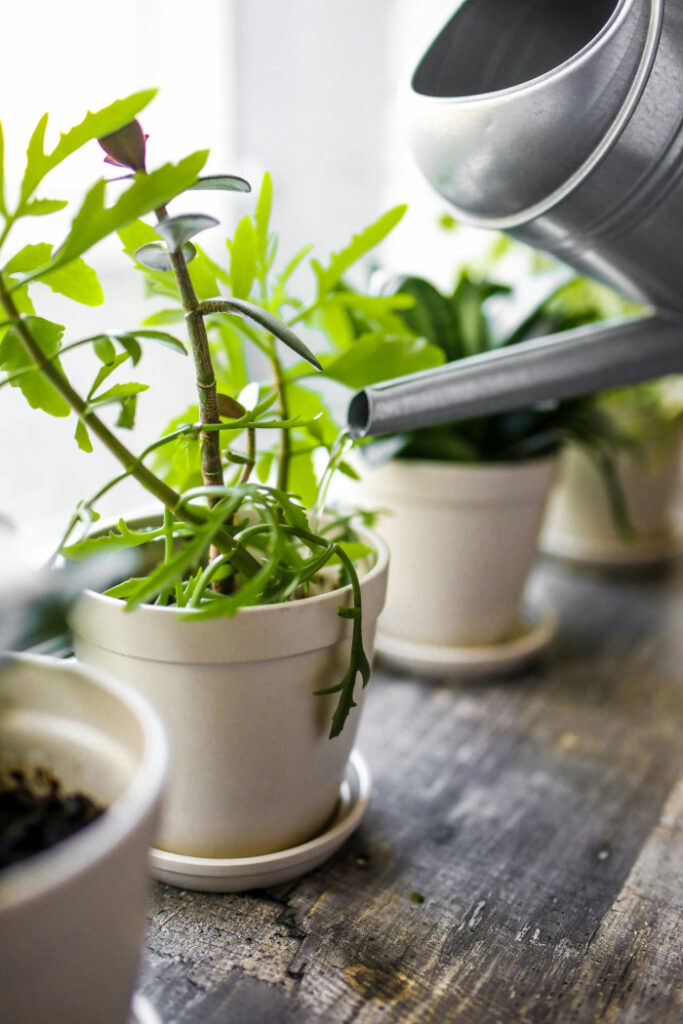
Adding Nutrients to Potting Soil
Plants need nutrients to thrive, just like we do. In the wild, they absorb water filled with dissolved minerals from the soil, which come from the breakdown of rocks and organic materials over time.
The availability of these nutrients in your potting mix depends on factors like pH and soil composition. A mix rich in soil and organic matter will provide plenty of nutrients, while lighter mixes, like those with coconut coir or sand, will offer fewer minerals.
If you opt for a lighter mix, you’ll need to supplement your plants’ nutrition. This can be in the form of liquid or granule fertilizers. These days, I prefer a slow-release granule fertilizer because I don’t have to worry about when to fertilize—the nutrients are always available when the plants need them. Without this boost, your plants might not get the nutrition they require, leading to slower growth or poor health.
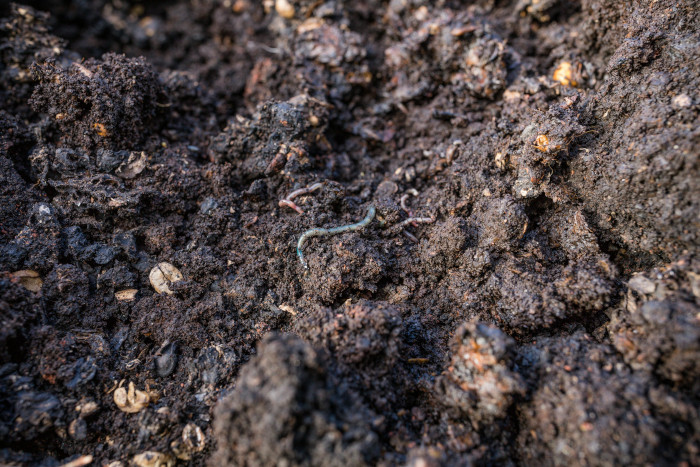
Potting Soil pH Balance: What You Need to Know
pH plays an important role in how plants absorb nutrients. The right pH means minerals are available for absorption, while the wrong pH can lock them up. Plants have adapted to their native soils, so those that thrive in acidic conditions might struggle if the pH is too high, and vice versa.
Most plants are happiest with a neutral or slightly acidic pH, which you’ll find in most potting mixes. Organic matter can lower pH slightly, but it usually stays within a range that most plants enjoy. However, if your plant prefers specific pH conditions, you’ll need to make some adjustments.
If you need to lower pH, adding sulphur is a common fix, while dolomitic lime raises alkalinity.
Tip: For most plants, unless you’re dealing with a very picky species, you probably won’t need to mess with pH at all.
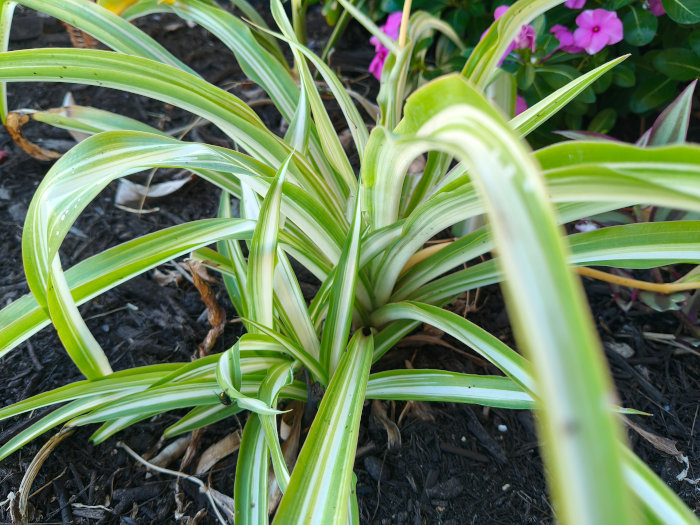
Light Requirements
If your plant’s getting tons of sunlight, it’s going to dry out fast. That means a heavier mix that holds moisture longer will help keep up with the demand. On the flip side, if it’s in a shadier spot, you’ll want a lighter, well-draining mix so the soil doesn’t stay wet for too long. If your plant’s not getting the right light, you’ll see problems fast—yellow leaves are usually a giveaway.
Watering Frequency
Watering’s a tricky one. If your mix drains quickly, you’ll need to water more often. If it holds moisture, you can stretch it out a bit. So, it’s all about finding the right balance. If you’re not on top of it, you could end up underwatering or overwatering, and trust me, neither is a good outcome.
Humidity and Its Impact on Soil
Humidity’s something you don’t hear much about when it comes to potting mixes, but it can make a difference. In a super humid environment, the soil stays moist longer, so you might want a mix that drains quickly to avoid any issues like root rot. It’s not a huge factor in choosing a mix, but definitely something to keep in mind.
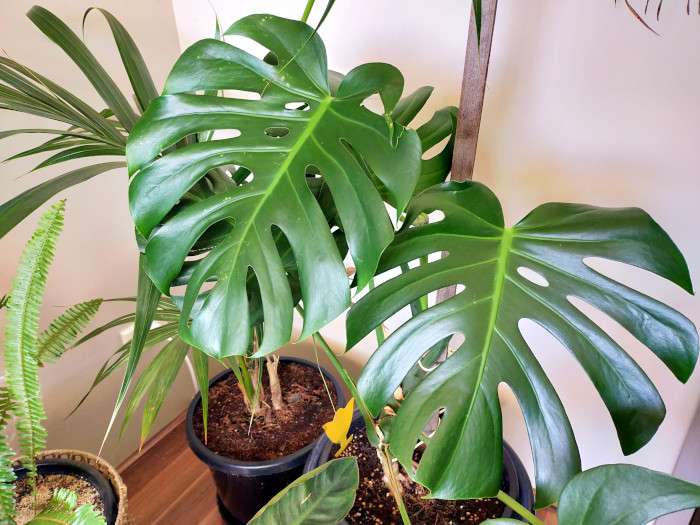
DIY Potting Mix for Indoor Plants
I generally stick to the same potting mix recipe for most of my plants. It keeps things simple and ensures consistent soil conditions, making watering more predictable. Plus, buying ingredients in bulk saves money and lets me tweak the mix to suit different plant needs.
Here’s my general indoor plant mix:
- 35% Coco chips/mulch – Provides structure and airflow.
- 35% Coir – Holds moisture without compacting.
- 20% Perlite – Ensures good drainage.
- 10% Potting mix/compost – Adds a bit of nutrients.
I never really measure things out, but just go for an even amount of coir and coco mulch. You want to see plenty of perlite in the mix.
Tip: This blend works well for most indoor plants, but you can always adjust it based on how fast your soil dries out or how much drainage your plant needs.
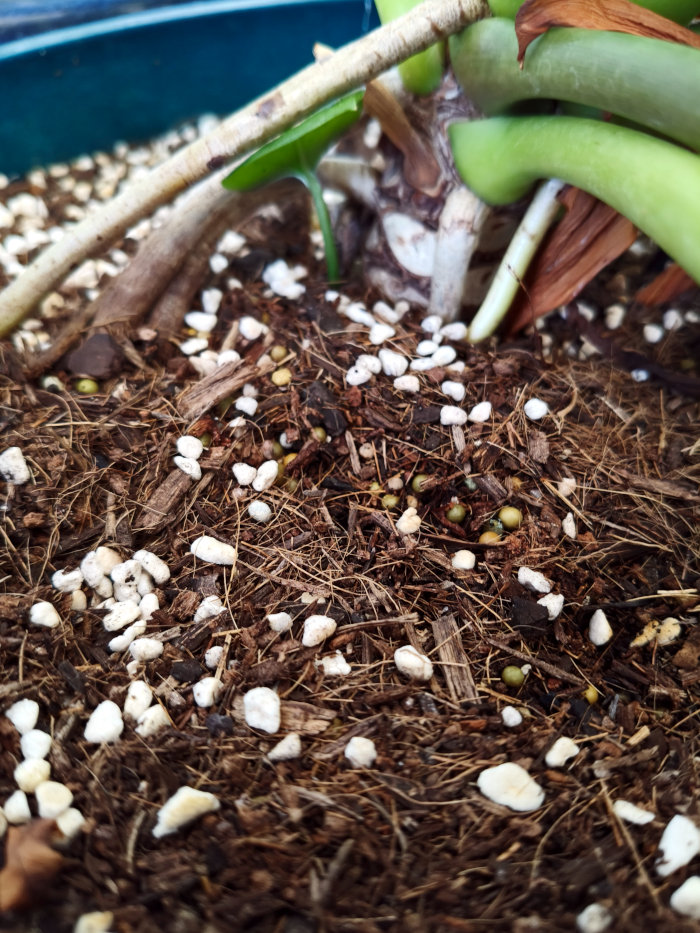
Conclusion
Creating the best potting soil for indoor plants comes down to understanding what your plants need and customizing the mix to suit. The potting mix I’ve shared is a low-fuss, versatile solution that works for most indoor plants. It’s all about finding the right balance—good drainage, moisture retention, and a little bit of nutrition.
Give this mix a try and see how it works for your plants. You might find that adjusting the proportions or watering routine gives you even better results. Let me know how it goes—I’d love to hear if this mix helps your plants look their best.
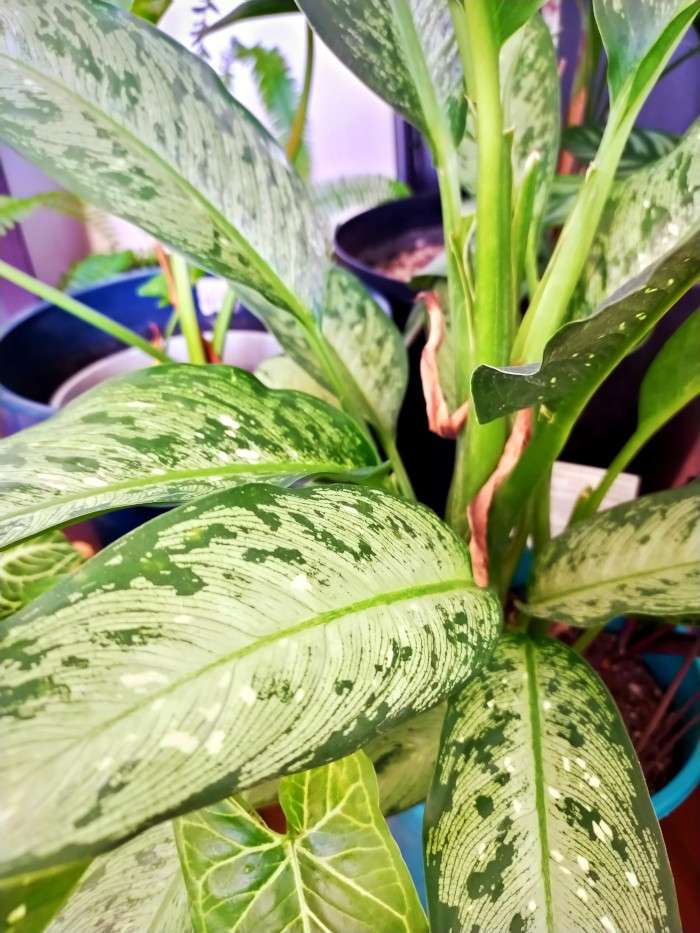
FAQ
Does Potting Soil Go Bad?
Potting soil doesn’t exactly “go bad,” but it can lose its effectiveness over time. When left to dry out completely, it becomes hydrophobic, meaning it won’t absorb water, even if you water it a lot. This can cause your plant to dry out and die, even if you’re following your watering routine.
The fix? Soak the soil in a tray or bucket until the moisture wicks into the mix. You can also apply a soil wetter to help it rehydrate.
Over time, the nutrients in the soil are used up, so it’s important to refresh the mix. Adding fresh organic matter, like compost, or using liquid or granular fertilizers can help rejuvenate the soil and bring it back to life.
Can You Reuse Potting Soil?
Yes, you can reuse potting soil! It still retains its structure and may have some leftover organic matter, making it perfectly fine to recycle. If you’re planning to reuse it, I recommend adding fresh organic matter like compost to reintroduce nutrients.
You also don’t have to reuse all the old potting mix in one go. Instead, you can mix it with fresh soil in certain containers or plants, which helps maintain balance.
Tip: Old potting mix is great for filling raised beds or large containers.
Can You Use Potting Mix for Vegetables?
Yes, potting mix can be used for growing vegetables, as long as it contains organic matter. Many vegetables will thrive in it, but certain ones, like carrots, prefer a finer, softer texture. If you’re growing root vegetables, consider adding extra sand to the mix for better drainage and root expansion.
How to Sterilize Potting Soil
You can sterilize potting soil by exposing it to heat. Spread it out on a tarp and cover it with plastic. The trapped heat will kill all the bacteria and organisms, making the soil safe to reuse. Once it’s dried out and cooled, it’s ready for fresh planting.
